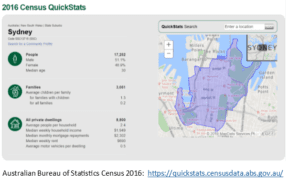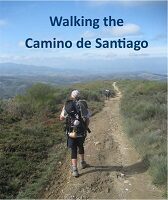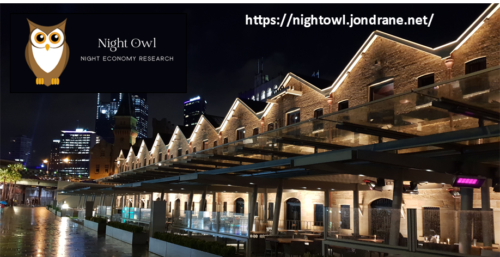ANZ Night Economy explores the new frontier, the sleeping city and the night time economy of the future. Dr Jon Drane invited to chair this international event and identify Night Time Economy Strategy.
The Night Economy -How can the Sydney CBD become a 24/7 Night Economy and what lessons can we learn from it and other cities, regional towns and international examples to create a model for the future of the night economy across Australia?
The ANZ Night Time Economy Forum held on the 12th to 14th June 2019 and chaired by Dr Jonathan Drane brought many of these issues to life and went beyond the typical tourist and event based analysis of this subject.
When Sydney (and other Australian cities and towns) substantially shuts down at 10 pm and relies predominantly on its transient visitor populations to feed its night activities, there is a long way to go.
The ANZ Night Economy Forum dealt with these issues taking the debate beyond the tempting focus on transient visitation solutions to the strengthening of the more permanent ‘structural’ aspects of the ‘city and place economy’ that might lend light to the creation of the 24/7 night economy of the future.

The forum brought together government agencies, local government authorities, industry, academia and legislators across Australian from Perth to Canberra, Hobart, Sydney and the Gold Coast then to regional settings like Lake Macquarie, Townsville, Newcastle and to Wellington in New Zealand and more.
The cohort sought to not only understand big city, big population night economies but small vibrant regional examples and strategies.
Contributing to this complex, exciting topic were politicians, city planners, economic development managers, city precinct officers, urban designers, architects,consultants, retail businesses, industry associations and developers. Night economy market participants spanned areas from music to creative spaces and entertainment venues and into the international arena.
Many questions and issues arose and a framework for understanding the NTE arose:
How can Sydney maintain economic ‘night continuity’ when it relies predominantly on a transient population and not a more permanent ‘structural’ population and associated offerings. Events like Vivid and the Sydney Festival sporadically bring millions of visitors, but what happens ‘after the parade’.
The canvass of the city at night it would seem is one of darkness with intermittent lit precincts and enclaves. The harbour foreshore lights up from the Opera House through the Rocks, Walsh Bay to Darling Harbour but the inner canvass is spotted with night precincts and enclaves such as Kings Cross, Angel Place, Cowper St Wharf and more.
Daily Migration Day Economy
Meanwhile every work day, between 1 and 1.5 million people (1) come and go from the city in a transient daily migration of workers, tourists and other visitors. But what is left in the city offerings between these migrations, and how does it resemble or become a night economy let alone a 24/7 city that never sleeps?
Resident Night Population
In amongst this transience, the Sydney Peninsula (Circular Quay to Haymarket- Darling Harbour to Botanical Gardens) has only 17,252 (ABS 2016) residents- its permanent ‘structural population’.
Even the whole Local Government Area of Sydney and its population of 208,374 (ABS 2016) is not as large as Blacktown’s (Australia’s largest LGA by population at 336,962). Around 65,000 people of the 100,000 working residents who live in the local government area work in the peninsular.

Manhatten versus Sydney
Manhatten, the city that never sleeps, by comparison, has a permanent population of approximately 1.6 million and during the working week this swells to 3.9 million (2) as a comparison. On this point also, right on our geographical doorstep is the power house of the Asiatic Cities and their vibrant night-scapes, which in some cases claim a longer history than the European and American examples.
Commercial and Retail Opening Times
And how can our city office towers and retail offerings afford to be empty of commercial activity 8 to 10 hours during the late evening and morning period. In the creation of these megalith towers, they are valued both commercially and economically on the assumption of 24 hour ownership, lease and usage and yet they often sit empty in the night hours? How much investment value and economic activity is being lost?
Historical Perspective
To give some historical perspective to these questions, in the 1960s it was a common saying that you could fire a cannon down George St after 5pm. This was not some idea of insurrection but a statement that the so called city was really a glorified town formation with little resident CBD population and evening offerings.
Sex and the City
It is also in hindsight, a strange polarity that the re-known night time economy of that time revolved around a weird and rather advanced mix of dodgy night clubs and unprotected sex workers in Kings Cross.
Beyond Traditional Night Time Economy Offerings
The forum sought to define how a city can create a night time economy that goes beyond traditional examples of restaurants, theatres, cinema, pubs, night clubs (and sex).
The landscape of night time is divided into evening economy versus late night economy separating the concept of dinner related early evening activities to late night entertainment and clubs which in themselves have attracted controversy and restrictions due to alcohol/drug related violence and associated restrictions and curfews that remain the subject of intense debate.
The night time economy builds our economic profiles and international attraction but also attracts problems which were also addressed with expert speakers in this area from Lockout to other examples of greater access.
Community, Inclusivity and Welfare
At the community end of the night time economy lies the safety benefits of people in the city at night from people returning home from work, to those heading out for a night shift. Homeless people benefit from government and benevolent services that extend into the evening from shelters and related services to libraries and government support agencies.
City Planning Challenges
At the city planning end of the equation, how do we plan for these changes and indeed is planning the correct method for activation of such precincts and outcomes. Do we use stimulant instruments such as Mixed Zoning or do we instead as City Builders take a more proactive role and design and develop precincts with development bodies.
Do we take the examples of Barangaroo, Darling Harbour, City West and Honeysuckle in Newcastle to create catalyst related precincts. Do we plan, design or develop a Night Time Economy.
Historical Town Formations
Another consideration is the restraint that our city and town formations bring to us in historical terms. The typical regional town formation for example was designed with small resident populations in the town centre while the population worked and lived in the rural catchment surrounding the town centre. In the beginning, there were also no shopping centres, which is hard to imagine and in effect the town formation of old was the regional shopping centre.
The two storey ornate formations of our historical towns is testament to this era and they held only shop top housing and no megalith apartment towers which only recently form the basis for a structural population that feeds on the streetscape below. The question arises how do we adapt low resident town formations to a vibrant night economy?
Infrastructure, Safety and Accessibility
At the infrastructure end of things, how do we support a mobile vibrant night population with a safe transport option that does not rely on cars and car parking? How do we stop millions of people migrating across the face of our cities in a daily migration at peak hours and is this part of the night time economy solution or formula?
Sustainability and the New Frontier
On the issue of sustainability and environment the recent election has reinforced the need for climate urgency but the validity of jobs and the need to feed our families. Even more compelling – is utilising our city infrastructure and city buildings 24/7 the city’s version of burning the candle at both ends?
These questions and concepts were the subject of review by experienced speakers who shared experience, examples and case studies to help us through the conundrum. Dr Drane ran a workshop see web page on the first day with several Local Government Authorities and other industry attendees covering ‘city precinct activation’ and to shift the emphasis from a purely economic lens to a ‘place economy’ and precinct/enclave focus.
Despite our existing vibrant night life precincts in our major city centres, our cities in general have a long way to go in the conception and realisation of these exciting new offerings.
Economic Benefits
Meanwhile the statistics show that there is a huge missed opportunity for our economy from the creation of an NTE. The Greater Sydney night time economy employs 234,000 people (2017) and has the potential to rise from its current annual value of $27.2B to $43.3B, an increase of $16.1B (3).
Out of the findings of the ANZ night time economy forum we can further the debate, understand the issues and plot a path to the future of our cities both day and night with an emergent framework of understanding.
Stay tuned to Dr Drane’s web site for further updates on these frameworks and associated research initiatives which are designed to bring light to the night time economy.

Dr Jonathan Drane
Notes:
- Sydney City Council: The City at a Glace https://www.cityofsydney.nsw.gov.au/learn/research-and-statistics/the-city-at-a-glance. Viewed15 July 2019. 1.5million noted in forum.
- World Population Review: Manhatten Population, http://worldpopulationreview.com/boroughs/manhattan-population/ Viewed 15 July 2019
- Imagine Sydney – Play 2019- Deloitte- https://www2.deloitte.com/au/en/pages/future-of-cities/articles/imagine-sydney.html Viewed 15 July 2019
_______________________________________________
Other Related Articles and activities by Dr Jonathan Drane:
Dr Drane was invited as Chairman for ANZ Night Time Economy Forum, Sydney, June 12th to 14th.
Dr Drane Master Class on Night Time Economy run at ANZ Night Time Economy Forum, Sydney June 12th see web page and topic:
Creating a Night Time Economy: Plan, design or develop?
Outer West Dormancy Study Workshop held to define research on city precinct activation.
Relevant Links:
Link to UNSW Library for Published Doctorate
Research Sites – Jonathan Drane
Jonathan’s Linked In Profile
https://www.linkedin.com/in/jonathan-drane-6761a717/?trk=hp-identity-photo

